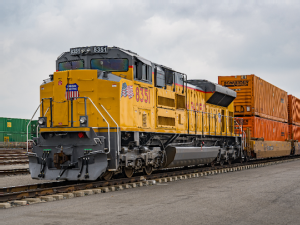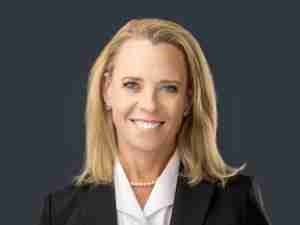When Wal-Mart Stores Inc. officials were looking for a distribution center location on Florida's Treasure Coast, St. Augustine-based Florida East Coast Industries Inc. had the ideal solution.
FECI's real estate subsidiary would sell the world's largest retailer 228 acres for development while FECI's other subsidiary, Florida East Coast Railway LLC, would custom-develop an intermodal link via its nearby Fort Pierce rail yard.
'It's been a wonderful success story,' said John C. Lucas, vice president and general manager for intermodal for the rail subsidiary, which is commonly known as the FEC. 'It's one of those times where the synergy worked just perfectly.'
The arrangement, which has been in place since October 2004, has been so successful that the FEC is doubling the capacity of the Fort Pierce operation by Labor Day, just in time for this year's peak holiday retail crunch.
Wal-Mart officials have been impressed enough that they have honored the FEC with an 'innovative carrier of the year' award, with Tracy Rosser, vice president of corporate traffic for Bentonville, AR-based Wal-Mart, commending the railway for providing 'outstanding service.'
The process formally began in June 2003, when Flagler Development Co., FECI's wholly owned commercial real estate development subsidiary, sold to Wal-Mart for $5.6 million the 228-acre tract, which is adjacent to Interstate 95 and near Florida's Turnpike. In addition, Flagler donated nearly 17 additional acres to St. Lucie County to facilitate construction of an access roadway, and Flagler agreed to work with officials of Wal-Mart and government agencies to preserve a nearby bald eagle nesting area.
By fall of 2004, Wal-Mart had built a 1 million-square-foot dry goods distribution center, and the FEC had put into gear what Lucas described as a 'boutique intermodal operation' entailing the marshalling of Wal-Mart loads in Jacksonville, the loads' 242-mile transport by rail to the Fort Pierce yard and their 6-mile shuttle to the distribution center using FEC Highway Services, the FEC's drayage unit. Also part of the operation is the return of empty containers back to Jacksonville, using the same process in reverse order.
'This is a very clean, day-in/day-out operation just for Wal-Mart,' said Lucas, who noted that what began with between eight and 10 loads a day has now grown to 60 or more loads a day at peak times. 'We basically created something from nothing just for them.'
The Wal-Mart operation is indicative of a solid pattern of growth for the FEC, particularly in intermodal business. While northbound moves of aggregate from South Florida and southbound transport of automobiles continue to enjoy upswings at the FEC, it is the intermodal sector that is posting the greatest gains, according to Lucas. The sector represents 60% of the railway's overall business.
The FEC's intermodal traffic increased in 2004 by 11% over 2003, followed by a nine percent gain in 2005, with six percent growth anticipated this year, when volume is projected to reach more than 330,000 units, Lucas said.
'For a 350-mile railroad, that is a dramatic amount of business,' Lucas said.
To be precise, the FEC tracks extend for 351 miles, from Jacksonville to Miami, following a Florida Atlantic Coast rail corridor established back in 1891 by Henry Flagler, the Standard Oil Co. cofounder who was a key force in Florida's development. In addition to the rail interests, he accumulated a vast real estate portfolio, some of which remains among the 10.2 million square feet of commercial, industrial and under-development space, 586 acres of entitled land and 2,540 acres of additional Florida real estate now under the FECI real estate subsidiary.
The Class II freight railroad has the distinction of being the exclusive provider of rail access to the Port of Miami-Dade, Broward County's Port Everglades and Port of Palm Beach while also providing drayage services throughout the Southeast and, through marketing alliances with conne








